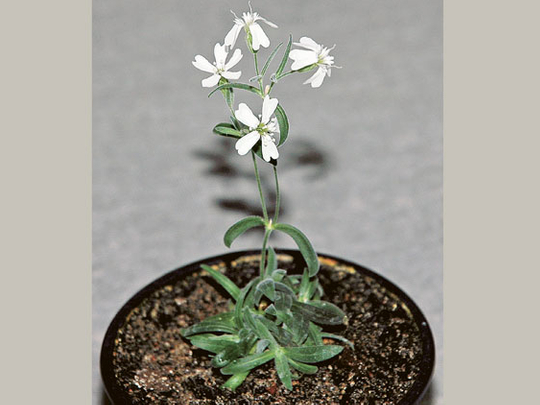
Washington: Fruit seeds stored away by squirrels more than 30,000 years ago and found in Siberian permafrost have been regenerated into full flowering plants by scientists in Russia, a new study has revealed.
The seeds of the herbaceous Silene stenophylla are far and away the oldest plant tissue to have been brought back to life, according to lead researchers Svetlana Yashina and David Gilichinsky of the Russian Academy of Sciences.
The latest findings could be a landmark in research of ancient biological material and the race to potentially revive other species, including some that are extinct.
And they highlight the importance of permafrost itself in the "search of an ancient genetic pool, that of preexisting life, which hypothetically has long since vanished from the earth's surface," they wrote.
The previous record for viable regeneration of ancient flora was with 2,000-year-old date palm seeds at the Masada fortress near the Dead Sea in Israel.
The latest success is older by a significant order of magnitude, with researchers saying radiocarbon dating has confirmed the tissue to be 31,800 years old, give or take 300 years.
The study, to appear in Tuesday's issue of the Proceedings of the National Academy of Sciences, described the discovery of 70 squirrel hibernation burrows along the bank of the lower Kolyma river, in Russia's northeast Siberia, and bearing hundreds of thousands of seed samples from various plants.
"All burrows were found at depths of 20-40 metres [65 to 130 feet] from the present day surface and located in layers containing bones of large mammals such as mammoth, woolly rhinoceros, bison, horse, deer, and other representatives of fauna" from the Late Pleistocene Age.
The permafrost essentially acted as a giant freezer, and the squirreled-away seeds and fruit resided in this closed world — undisturbed and unthawed, at an average of -7 degrees Celsius — for tens of thousands of years.












